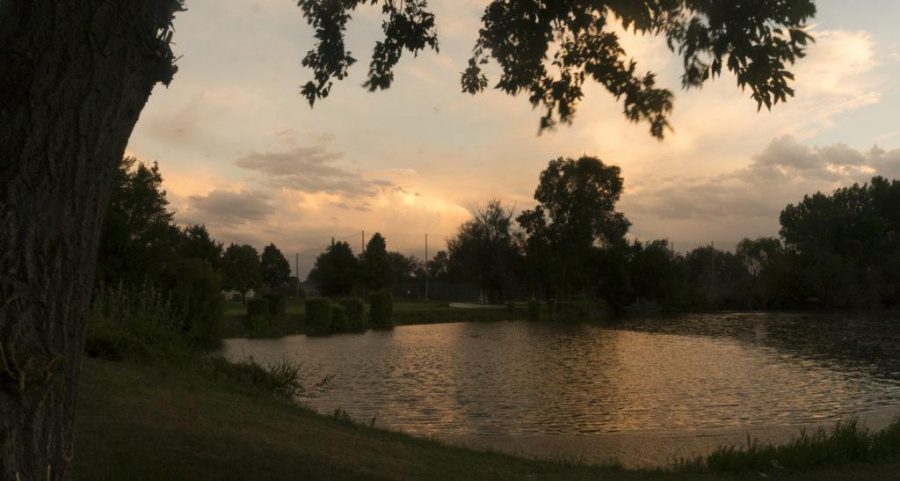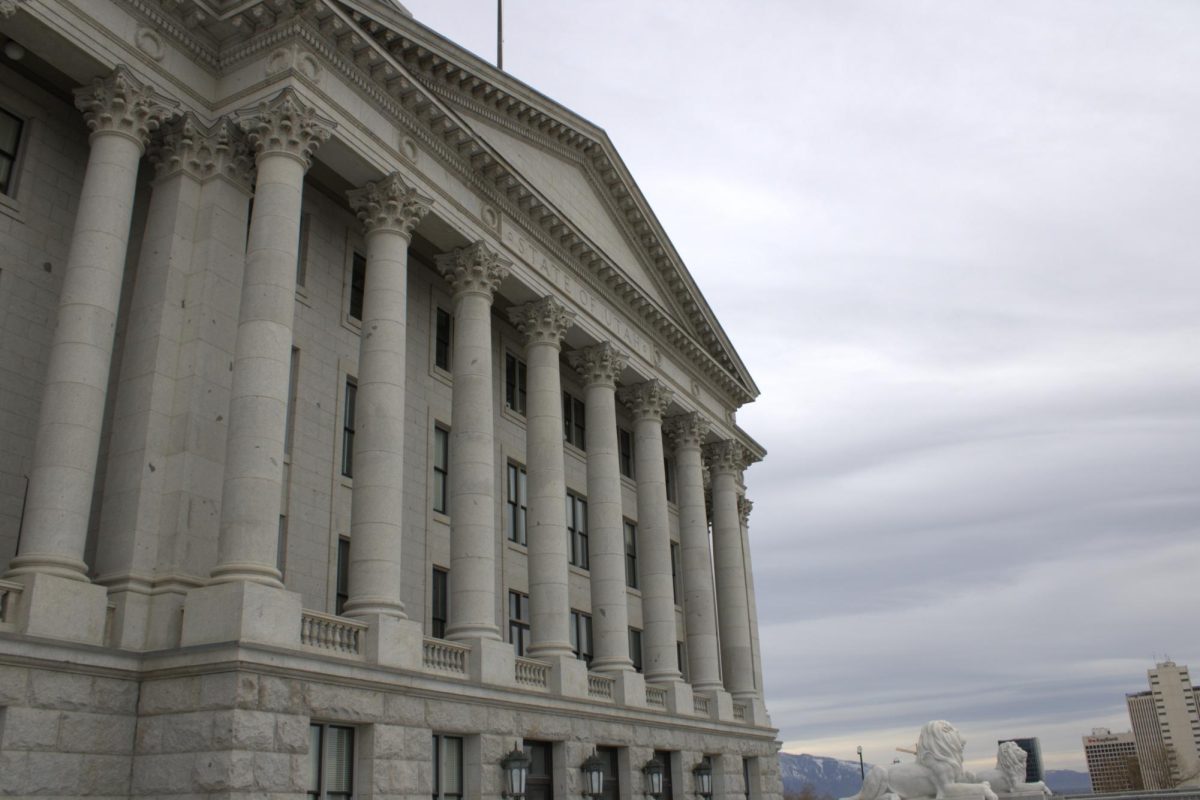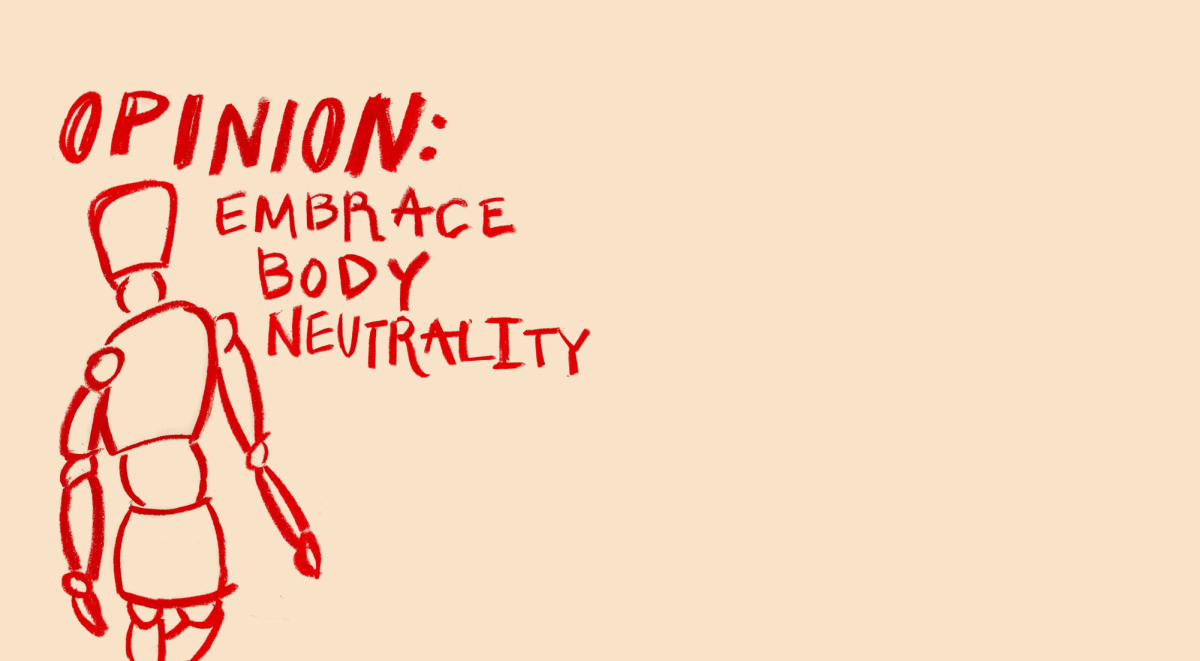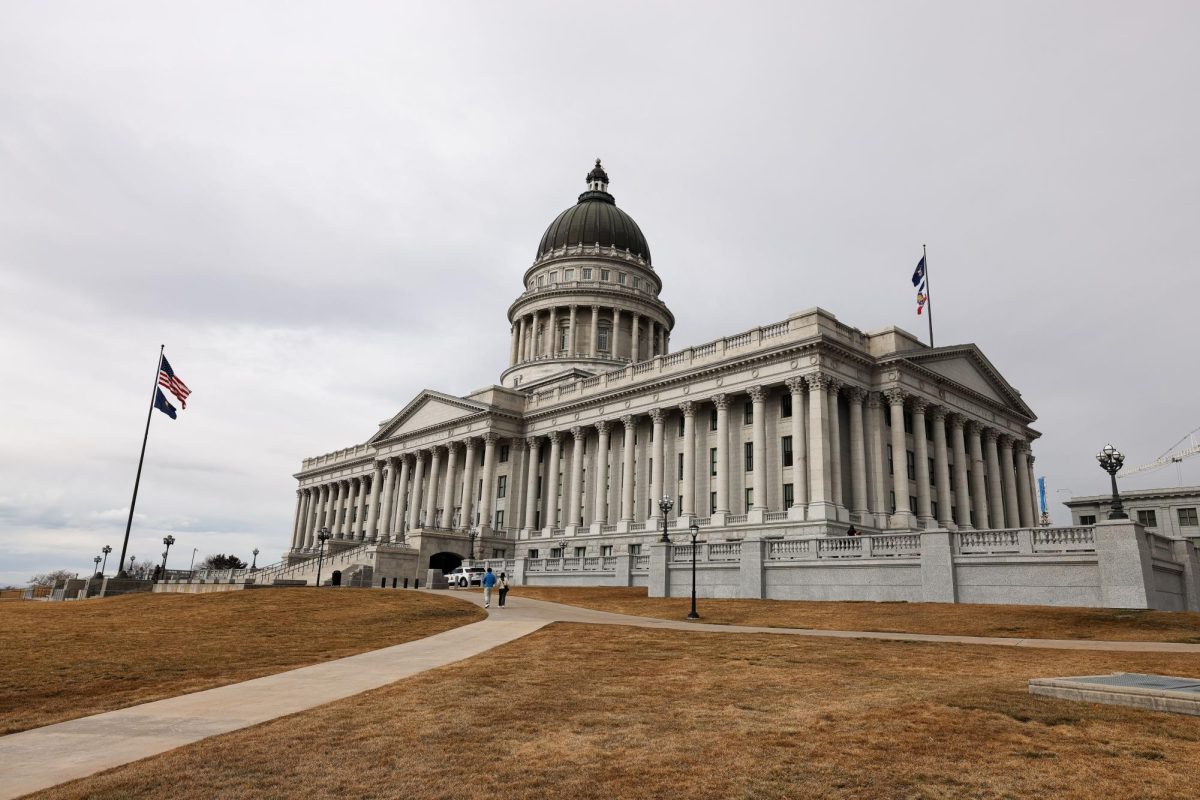Lien: It’s Time for Golf Courses to Pay Their Dues
The Nibley Park Golf Course in Salt Lake City, Utah on Saturday, Aug. 12, 2017. (Rishi Deka | Daily Utah Chronicle)
May 27, 2022
I hate golf courses. I think about seed bombing them all the time (I wouldn’t, as it’s illegal, but I often have the thought).
They’re a waste of space and water, with only a dozen or so people playing on acres of open land at a time. Historically, golf has not allowed women or people of color to play and remains unavailable to lower-income individuals. In Utah, about 282,000 people play the sport, making up only about 11% of our population. Rich, white men continue to dominate the field.
Golf courses in Utah take about 38 million gallons of water per day. For a “public amenity,” they don’t give back to the community in the ways they should.
Golf courses need to pay adequate property taxes and start opting for more sustainable methods of upkeep. Otherwise, they should be abolished altogether due to their detrimental impact on the environment and inaccessibility for the general public.
Economic Impact
Salt Lake’s golf courses have a $7.7 million budget, subsidized by the government. Initially, the golf operation was intended to be self-sufficient with only a few one-time monetary donations to specific courses. Yet that time has quite obviously passed. Every year, the city pours hundreds of thousands of dollars into improvements for courses, such as less expensive irrigation. Even with these one-time funds, the city will still need to tap into its general fund surplus to balance the budget. In the next 10 to 15 years, these courses will require around $20 million in maintenance.
The city currently subsidizes courses as a public amenity, despite them not benefiting everyone like a park would. To stop funding just one of these courses, the city would need to pay for a level of upkeep to lessen eventual reopening costs, causing a fiscal cycle of debt.
Golf has evident ties with the government, which allow it to avoid high property taxes. In the 1960s, Bob Hope — a comedian and avid golfer — started a campaign at the behest of California’s golf courses. It pushed for courses to be taxed as public amenities and open land rather than as courses. This proposition won, and for decades since then, California golf courses have paid low property taxes. Essentially, courses and clubs cheat the system by “grandfathering in” new members and changing ownership under the table.
The most recent information about golf course taxation in Utah is nearly two decades old, with nothing else available. Back in 2001, municipal courses thrived due to not needing to pay property tax. So, private courses attempted to follow in California’s stead. Now, taxation information regarding Utah’s golf courses seems nowhere to be found, raising a question of whether or not they’re taxed at all.
Water Usage
Aside from blatant tax evasion, golf courses use up valuable resources. Some courses can use a million gallons of water a day. Roughly 140 courses exist in our state alone. To put that into perspective, according to the Utah Division of Water Resources, Utahn residents use an average of 182 gallons of water per day.
In Utah’s drought, residents’ lawns suffer while the overuse of freshwater sources by golf courses suck up local supplies, leaving the general public, farmers and manufacturers with little water.
The state’s drought situation worsens exponentially by the day. Ninety-nine percent of Utah is in the second and third worst drought categories, “severe” and “extreme” drought. Wildfire season gets more intense every year, severely affecting deer survival rates.
Infuriatingly, golf courses in arid states use astronomically more water than they should. One course from the Canary Islands used “83 percent more water to irrigate its plants than was necessary.” At some point, the sport needs to use less water and return to its traditional Scottish roots of learning to play.
This has implications of equity. Why dedicate so much valuable water for a sport that benefits only a few people? If golfers want to keep the sport alive, the perception of it needs to change. Golf’s reputation doesn’t look great. Many view it as elitist, meant for those in higher tax brackets. Further, it excludes women and people of color, whether intentionally or not. Because of these perceptions, golf continues to garner low numbers of patrons.
Possible Solutions
There are viable sustainable alternatives other than just watering less. For example, golf courses can utilize recycled water. While unsuitable for human consumption, it can still maintain grass. The reclamation process also uses significantly less energy than other watering methods.
In order to fill their status as a public amenity, golf courses could add recreational opportunities. Basketball courses or running tracks could improve their public image. It would help to decrease the amount of land needing watering, as well as increase revenue. The city could also get rid of them altogether and replace the open land with more productive uses. For instance: housing to alleviate Utah’s current housing shortage.
Golfers are against most of these options, but the drought warrants more concern than a few angry Utahns. Despite my animosity for the sport, golf courses can’t go away completely. Grass helps to keep the planet cooler — doing its part for global warming — but the water waste problem needs fixing now.
Courses need to start implementing sustainable methods of keeping their lawns green. The sport needs to change if it wants to survive. Golf’s inherent politics, inaccessibility and public image all counteract increasing revenue. They only increase the monetary strain on the government.













Tyler • Mar 30, 2023 at 12:25 pm
Its very obvious this writer has first off never played golf and secondly never associated with anyone other than maybe her grandpa or dad that play golf. I’ve played with plenty of different race and creeds and both women and men. Heck, some courses I’m the minority next to Hispanics, Asians, and Poly’s. She talks about how its too expensive for everyone to participate, yet wants to tax the courses more which will make it more expensive to play. It already I getting more expensive for fees thanks to popularity and inflation. As far as the water thing goes, courses have looked terrible that last few years due to the water issues here. I’m not saying that we should say screw it and water away but it should be acknowledged that the water issues hurt them too. Now can some courses be better about their water management and maybe switch some of the landscape to not need as much water, probably.
Mike B • Oct 30, 2022 at 9:42 am
“A million of gallons per day” from an NPR article that doesn’t even reference any UT golf courses. That is misleading and lazy research.
Brian • Jun 14, 2022 at 7:41 am
Good article. I think your insights and views are well founded. Whether your exact stats are accurate does not really matter, as obviously not every citizen plays golf, but does in fact need water to live. At some point people need to start to face the reality that we waste too much water on frivolous things such as watering grass.
Ethan • Oct 27, 2023 at 2:59 pm
Fun fact it’s recycled water and it’s not water ahead meaning we don’t drink it.
Travis • May 28, 2022 at 7:34 am
Apparently you are stuck under a rock or something. If you knew the real percentage of how many people golf you wouldn’t be saying all this. I golf all the time and the course I golf at has hundred’s of people practicing or playing at all hours of the day. I know the maintenance crew and they don’t use much water at all, in fact the golf course is kind of sad looking because of how dry it is. The huge soccer field facility next to however has very lush green grass. I think you are out of your mind everything you have stated is a lie and the misinformation you are stating is not cool take it down.
crockmanian • May 27, 2022 at 7:34 am
So you suck at golf and want to blame someone. At least half of what you wrote is bulls**t. Look at it in a different way.